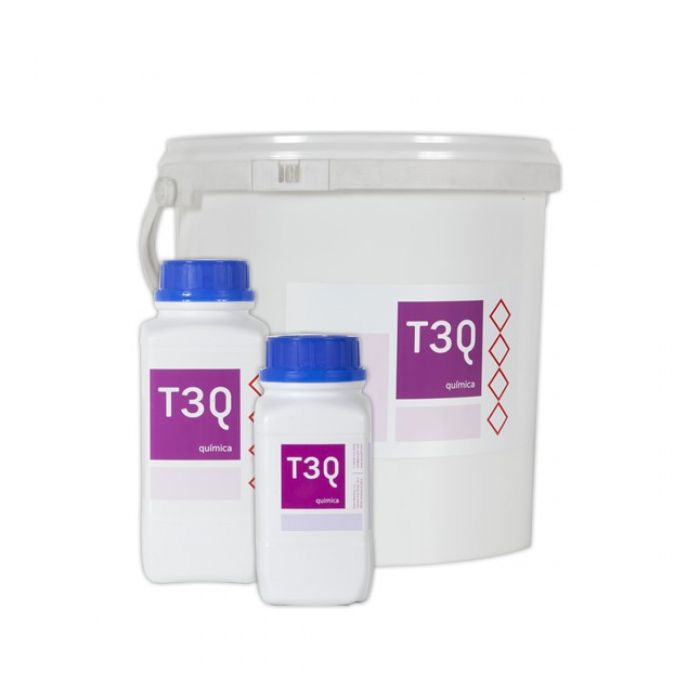Borax decahydrate
Sodium borate decahydrate,Sodium tetraborate decahydrate
Buy Borax Decahydrate
At T3Química.com, we offer you the opportunity to buy Borax Decahydrate online in different quantities, with fast deliveries within 72 hours for stock orders. Our online store offers a wide variety of packaging options for Borax Decahydrate:
- 500 g package
- 1 kg package
- 5 kg package
- 10 kg package
- 25 kg package
If you need a different type of packaging or special quantities, don't hesitate to contact us directly via email or phone. At T3Química, we customize packaging according to each client's needs.
What is Borax Decahydrate?
Borax Decahydrate is a widely used inorganic chemical compound, recognized for its solid, crystalline, and colorless form. It is also known as sodium borate, sodium tetraborate, or disodium borate decahydrate. It is a natural mineral obtained from the evaporation of salt lakes and evaporite deposits.
Chemically, Borax Decahydrate is composed of molecules of boron, oxygen, sodium, and hydrogen. Its chemical formula is Na2B4O7·10H2O, which indicates that each molecule of Borax Decahydrate contains four boron atoms, seven oxygen atoms, two sodium atoms, and ten water molecules.
Borax Decahydrate is known for its wide range of applications in various fields. Its versatility is due to its chemical and physical properties, including the ability to form alkaline solutions and act as an excellent buffer agent. Moreover, it is biodegradable and does not pose a significant environmental threat when used properly.
Composition
Borax Decahydrate is primarily composed of boron, oxygen, sodium, and hydrogen. It is generally a safe compound, but it should be handled carefully, avoiding direct contact with eyes and skin.
What is the formula for Borax Decahydrate?
The chemical formula for Borax Decahydrate is Na2B4O7·10H2O.
Main Uses
Borax Decahydrate has a wide variety of applications in different industries:
- Cleaning product industry: used as an ingredient in detergents, soaps, and multipurpose cleaners due to its ability to soften water and enhance cleaning effectiveness.
- Glass industry: employed in glass and enamel manufacturing, as it helps reduce the melting temperature and improve the strength of the glass.
- Textile industry: used as a flame retardant in fabrics and as a bleaching agent to remove stains and improve fabric whiteness.
- Agriculture and gardening: used as a fertilizer and pH regulator in soil, promoting plant growth.
- Metallurgical industry: used in metal welding, where it acts as a flux to improve welding quality.
Relevant Aspects
Borax Decahydrate is generally safe, but some precautions should be taken:
- Handling and storage: it is recommended to use gloves and safety glasses when handling Borax Decahydrate. Additionally, it should be stored in a cool, dry place, out of reach of children and away from heat or fire sources.
- Proper use: always follow the manufacturer's instructions and use Borax Decahydrate only for its intended purposes. Avoid direct contact with eyes and skin, as well as ingestion of the product.
- Proper disposal: Borax Decahydrate can be safely disposed of by following local and national regulations. It should not be released into the environment or poured into drains.
Frequently Asked Questions
How should Borax Decahydrate be stored?
Borax Decahydrate should be stored in a cool, dry place, away from heat and flames. It is also recommended to keep it out of the reach of children.
Is Borax Decahydrate soluble in water?
Yes, Borax Decahydrate is highly soluble in water, making it easy to use and apply in various industries.
Can it be harmful?
Although Borax Decahydrate is generally safe, it can be irritating to the skin and eyes and may have harmful effects if ingested. Therefore, it is important to follow appropriate safety measures when handling it.
Is it safe to handle?
Yes, handling Borax Decahydrate is safe as long as proper protective equipment, such as gloves and safety glasses, is used to avoid direct contact with the skin and eyes.
Can it be used in all industries?
No, Borax Decahydrate has specific applications in certain industries, such as the cleaning product industry, glass industry, agriculture, textile industry, and metallurgical industry. Its use is determined by its properties and chemical characteristics.
Conclusion
Borax Decahydrate is a versatile chemical compound with a wide range of applications in various industries. At T3Química.com, we pride ourselves on offering high-quality chemical products to meet your needs. If you have more questions about Borax Decahydrate or any other product, feel free to contact us. We are here to help.
Physical and Chemical Properties of Borax Decahydrate
Melting point: It has a relatively high melting point, around 75°C (167°F), making it a solid at room temperature.
Solubility: It is highly soluble in water, forming an aqueous solution.
Density: It has a density of approximately 1.73 g/cm³ in its crystalline form.
Hygroscopicity: It has some capacity to absorb moisture from the air, which may affect its stability and flow if exposed to humid environments for extended periods.
Borax Decahydrate Compatibility
Metal compatibility: Borax Decahydrate is compatible with most metals, but it may react with alkaline metals such as aluminum or magnesium in the presence of moisture, which could generate hydrogen gas.
Incompatibility with strong acids: Direct contact with strong acids, such as hydrochloric acid (HCl) or sulfuric acid (H2SO4), should be avoided, as it could cause unwanted chemical reactions and release toxic gases.
Plastic compatibility: It is compatible with most common plastics, such as polyethylene (PE) or polypropylene (PP), making it easy to store in suitable plastic containers.
Avoid contact with strong oxidizers: It should be kept away from strong oxidizing agents, such as potassium permanganate (KMnO4) or hydrogen peroxide (H2O2), to avoid possible exothermic reactions.
| FORMULA | Na2B4O7*10H2O |
| CAS | 1303-96-4 |
| EINECS | 215-540-4 |
| N. CEE | 005-011-01-1 |
| Pictogramas | Carcinogenic, mutagenic (MU) |
|---|

